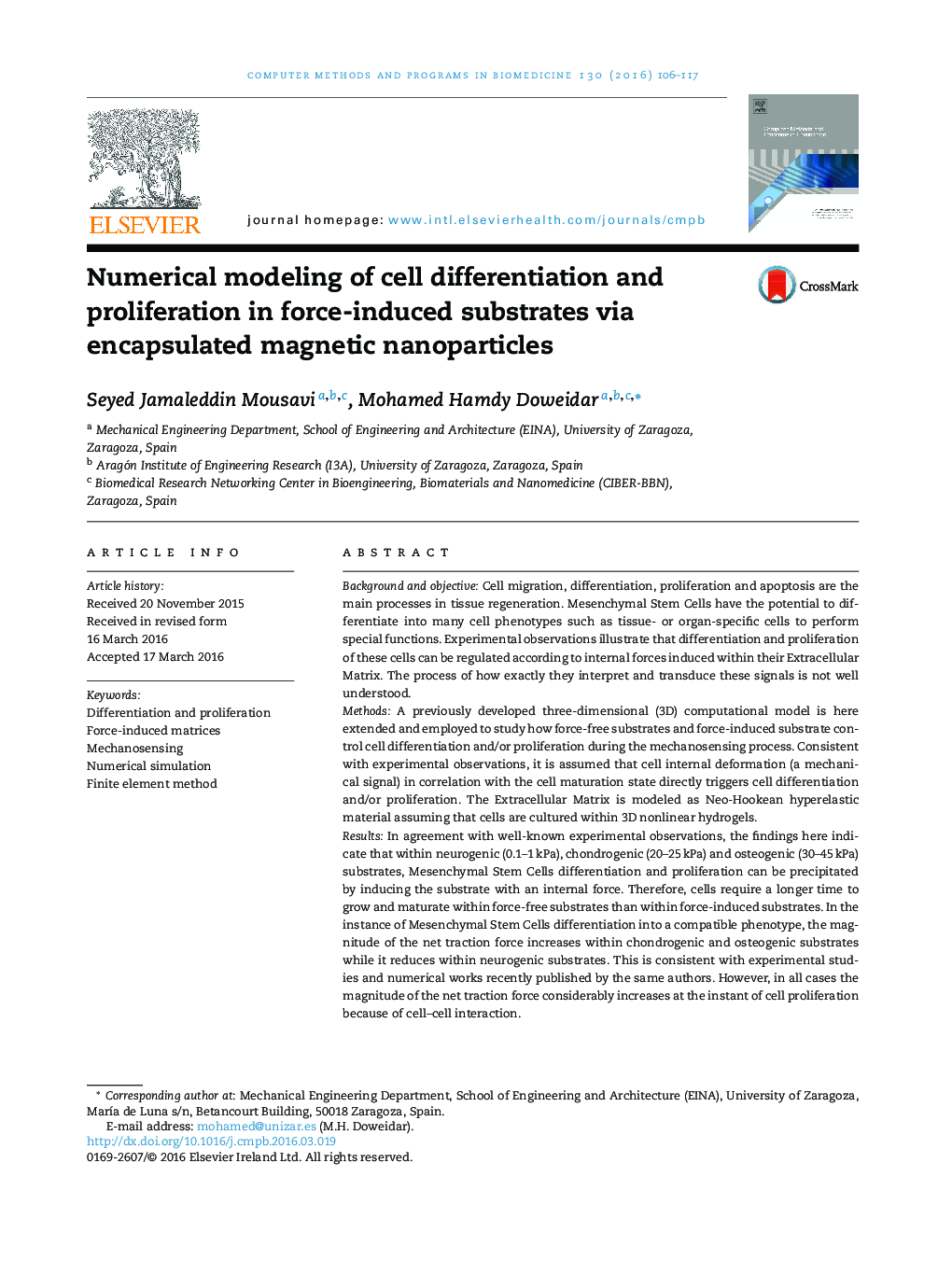| کد مقاله | کد نشریه | سال انتشار | مقاله انگلیسی | نسخه تمام متن |
|---|---|---|---|---|
| 468640 | 698245 | 2016 | 12 صفحه PDF | دانلود رایگان |
• A 3D model is developedto study how force-induced substrate controls cell differentiation and/or proliferation.
• Cells are cultured within 3D Neo-Hookeanhyperelastic hydrogels with encapsulated magnetic nanoparticles.
• Internal forces can play an outstanding role in remotelycontrolling the lineage specification of MSCs and cell proliferation.
• A new perspective to delineate the role of force-induced substrates in controlling the cell fate.
Background and objectiveCell migration, differentiation, proliferation and apoptosis are the main processes in tissue regeneration. Mesenchymal Stem Cells have the potential to differentiate into many cell phenotypes such as tissue- or organ-specific cells to perform special functions. Experimental observations illustrate that differentiation and proliferation of these cells can be regulated according to internal forces induced within their Extracellular Matrix. The process of how exactly they interpret and transduce these signals is not well understood.MethodsA previously developed three-dimensional (3D) computational model is here extended and employed to study how force-free substrates and force-induced substrate control cell differentiation and/or proliferation during the mechanosensing process. Consistent with experimental observations, it is assumed that cell internal deformation (a mechanical signal) in correlation with the cell maturation state directly triggers cell differentiation and/or proliferation. The Extracellular Matrix is modeled as Neo-Hookean hyperelastic material assuming that cells are cultured within 3D nonlinear hydrogels.ResultsIn agreement with well-known experimental observations, the findings here indicate that within neurogenic (0.1–1 kPa), chondrogenic (20–25 kPa) and osteogenic (30–45 kPa) substrates, Mesenchymal Stem Cells differentiation and proliferation can be precipitated by inducing the substrate with an internal force. Therefore, cells require a longer time to grow and maturate within force-free substrates than within force-induced substrates. In the instance of Mesenchymal Stem Cells differentiation into a compatible phenotype, the magnitude of the net traction force increases within chondrogenic and osteogenic substrates while it reduces within neurogenic substrates. This is consistent with experimental studies and numerical works recently published by the same authors. However, in all cases the magnitude of the net traction force considerably increases at the instant of cell proliferation because of cell–cell interaction.ConclusionsThe present model provides new perspectives to delineate the role of force-induced substrates in remotely controlling the cell fate during cell–matrix interaction, which open the door for new tissue regeneration methodologies.
Journal: Computer Methods and Programs in Biomedicine - Volume 130, July 2016, Pages 106–117
